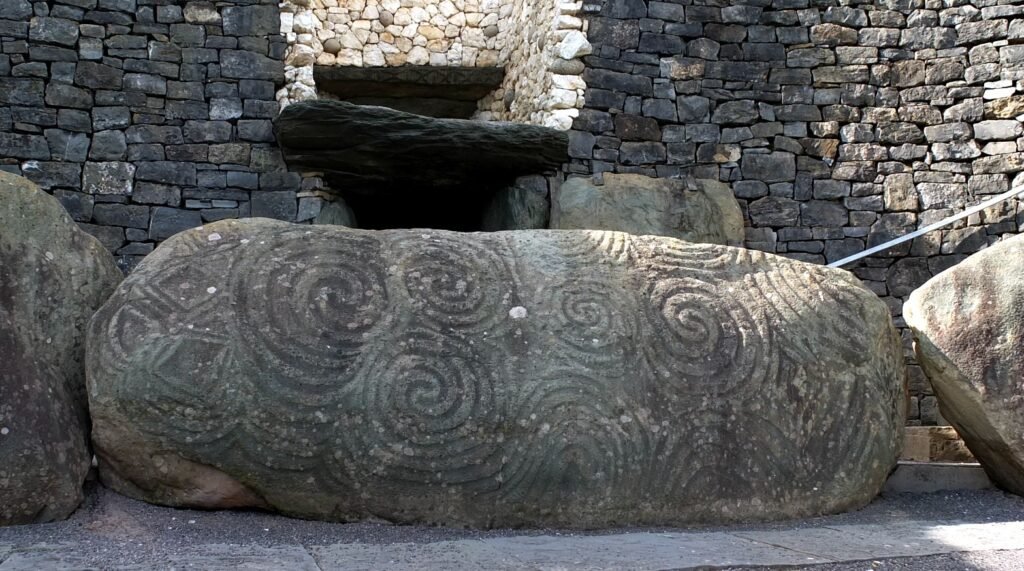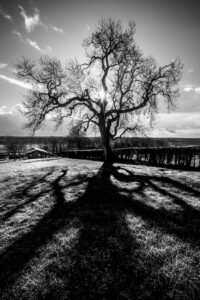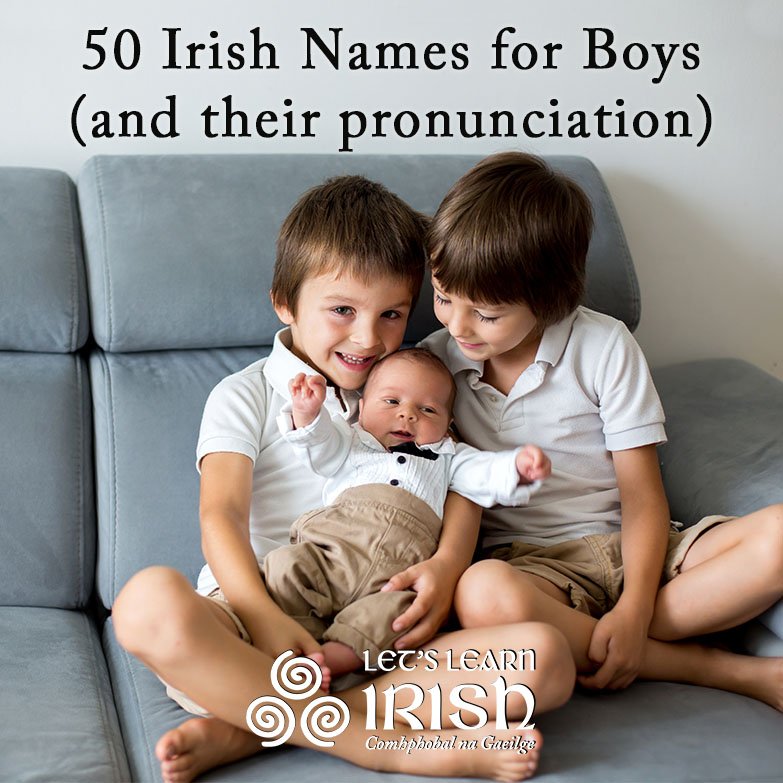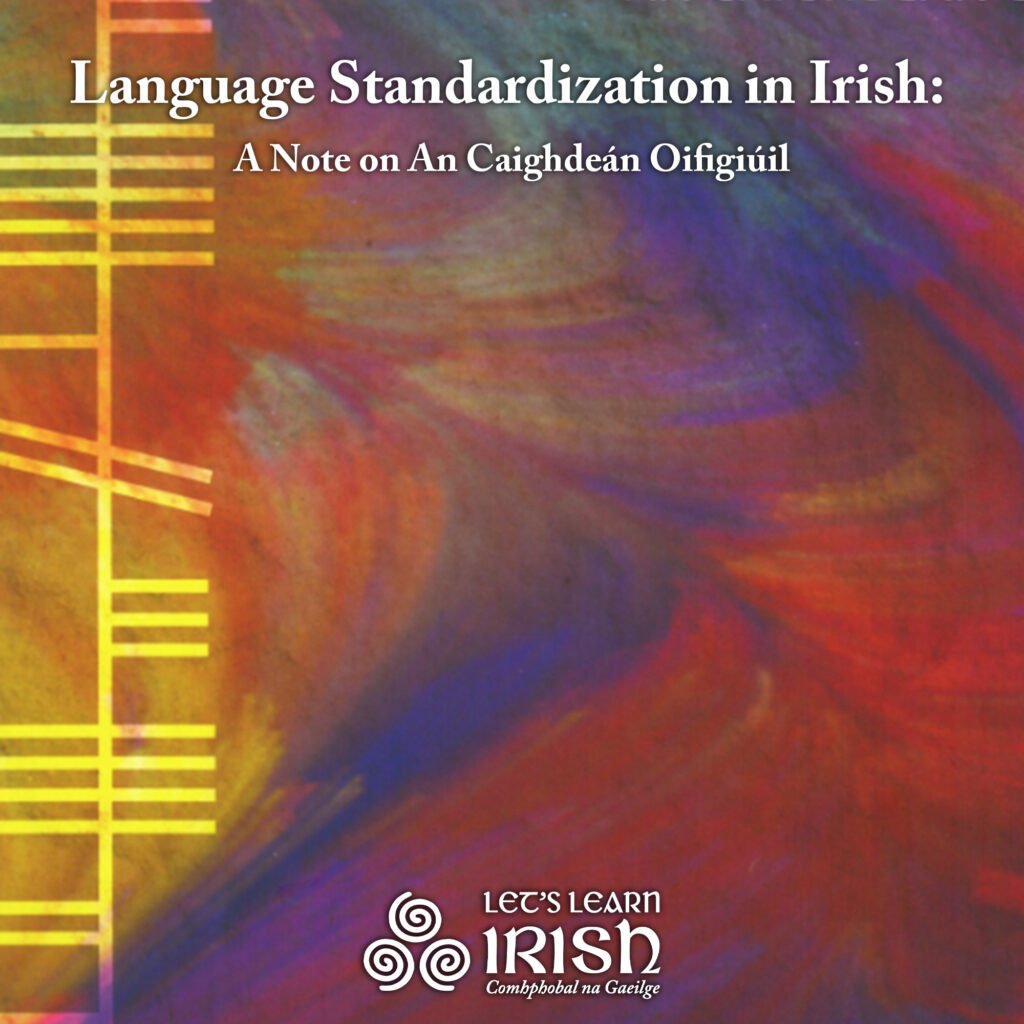The Irish Language as the Long Conversation
When I look at Newgrange at Brú na Boinne — that grand Neolithic complex with its portal stones covered all in swirls—I don’t just see a mystery, I see a conversation. An obscure, difficult conversation, but a clear one too. Sparkling like stars in an inky black sky, the sky so few of us have had the chance to see since electric light took over the world. The world that was once filled with mystery and faith. Faith in growing things, living things. Things that weren’t fixed: standard, pure, untarnished, but mutable, changing things. As seeds change into sprouts and sprouts into trees and trees into forests and forests into old growth and forest gardens, they often bear little resemblance to each previous stage. What’s a pile of firewood to a grand old church oak?

I see those stones with their spirals and they seem straightforward enough to me. Someone, whether moved by the same stories or immortalized in part by them, saw fit to carve those portal stones with the spirals, the same tight hypnotic spirals that adorn the gold jewelry of Celts living across the Channel several thousand years later, and the coats on the bodies of some of my friends. And to those spirals I say mora duit (hello, good for you), for it’s clear to me they represent living, writhing things too. A single point slowly spiraling out, growing bigger and more hypnotic with each rotation, around its start point. Spiraling out like a dual of hair, curving to its own properties, on its own dual. I see simple life striving for greater complexity—acorns striving to be oak trees, as Tai Felix Kulyston once said in an episode of Bespoken Bones.
And although I might not know the exact origin or the same meters of story or the initiation rites or the astrologically defined holidays that motivated that stone carver, I know he and I and those spirals are made of the same stardust. In the grand family tree of life, from the first single-celled organism replicating until we replicated out of parents’ cells, as my kids, mo clann, will one day have their cells replicated out of the melding of me and my partner’s, that stone carver and I have a lot more in common than we do different, certainly more than either of us have with the squids who will inherit a climate changed Earth or those albino crocodiles Werner Herzog yaps on about for a time at the end of Cave of Forgotten Dreams.

So when I ask myself why I’m learning the Irish language, the language cut out of my family tree when we lost our home in County Mayo during the famine, I know it’s because I want better conversation. I want to join in with my great-great-great etcetera grandparents, mo sinnsear, who spoke it for millennia, for far longer than the bearers of my surname, my father’s fathers, have been speaking English. Not an immutable, unchanging pure original, but a language that has changed (albeit slowly) over the millennia, twisting towards the stars and taking on new dialects and aphorisms and poetry as it goes. That to me is something bailiffs and gentry and all the lust of modernity cannot bury. It is a seed, an acorn, a hazelnut, and it will grow and as it grows I’d like to see it grow into something that converses. Not something that just replicated mindlessly and aimlessly like a cancerous growth, but something which grows like the trees we now understand send each other signals through the neurotransmitters in their mycorrhizae, that glorious melding of mushroom and plant, and share resources with their weak and their hurt.
I’d like to see a dynamic modern Irish of queer people like me, and dusty old monuments still held in regard. If someone took the time to carve all that by hand, it must’ve meant a great deal, and with all the effort poured into the Irish language I can assure you that there is a richness like black soil in this tongue, mo teanga (my language), and twinkling in that inky blackness, like the eyes of a thousand fairies or the harp strings of a thousand gods, is spirit, mo anam (my soul), is that invisible reaching for complexity, for death to turn to compost and compost to turn to life and life to turn to great big forests. Truly, if you get a chance to study with Let’s Learn Irish, do it. I learned more in eight weeks with my excellent teacher than I did in all the three or four years I spent scouring the 1927 Dineen dictionary or reading Manchán Magan. Certainly, I learned a lot more phrases and words, like mora duit ar maidin (good morning!), which I use every day.
Sláinte, mo chairde – Good health, my friends!
Bígí páirteach!
Join the online Irish community at LetsLearnIrish.com.
Follow on social media @LetsLearnIrish.





